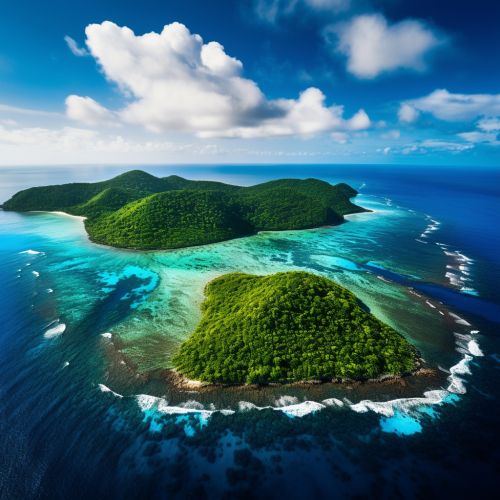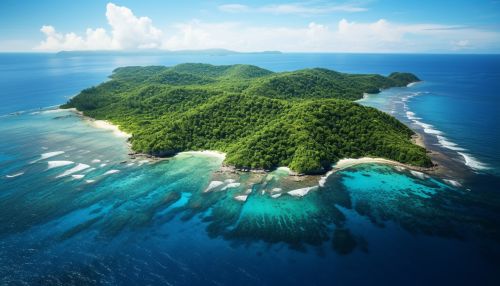Mariana Islands
Geography
The Mariana Islands are a crescent-shaped archipelago in the western Pacific Ocean, comprising the summits of fifteen mostly dormant volcanic mountains. The island chain forms a part of the eastern margin of the Mariana Trench, the deepest part of the Earth's oceans. The islands are the northernmost of the several island groups that make up Micronesia, straddling the boundary between the Philippine Sea and the Pacific Ocean.


Geology
The Mariana Islands are part of a geological structure known as the Izu-Bonin-Mariana Arc system. This water-covered arc of volcanic mountains forms part of a subduction zone, a type of convergent boundary where one tectonic plate is forced under another. The Pacific Plate is subducting beneath the Philippine Sea Plate, creating the Mariana Trench, and the volcanic islands of the Mariana Arc.
Climate
The climate of the Mariana Islands can be described as a tropical rainforest climate (Af), under the Köppen climate classification, due to its high humidity and year-round precipitation. The islands experience a wet season from July to December and a dry season from January to June. The average annual temperature is around 28 degrees Celsius (82 degrees Fahrenheit).
Flora and Fauna
The Mariana Islands are home to a diverse range of flora and fauna, some of which are endemic to the islands. The islands' isolation has led to the evolution of a unique biodiversity, including several endemic species such as the Mariana fruit bat, the Mariana crow, and the Mariana mallard. The islands' forests are predominantly composed of native tree species, including the flame tree, breadfruit, and coconut palm.
History
The Mariana Islands have been inhabited for thousands of years and have a rich history. The earliest known inhabitants, the Chamorro people, are believed to have settled the islands around 1500 BC. The Spanish explorer Ferdinand Magellan arrived in 1521, marking the beginning of European contact. The islands were later colonized by Spain, Germany, and Japan before becoming a territory of the United States following World War II.
Demographics
The population of the Mariana Islands is diverse, with a majority of residents being of Chamorro, Filipino, or other Pacific Islander descent. The official languages are English, Chamorro, and Carolinian, with many residents also speaking Filipino and other Asian languages. The majority of the population is Roman Catholic, reflecting the islands' Spanish colonial history.
Economy
The economy of the Mariana Islands is largely dependent on tourism, the U.S. military, and the garment manufacturing sector. The islands' natural beauty, including its beaches, diving spots, and World War II historical sites, attract tourists from around the world. The presence of U.S. military bases provides a significant source of income and employment for the islands.
